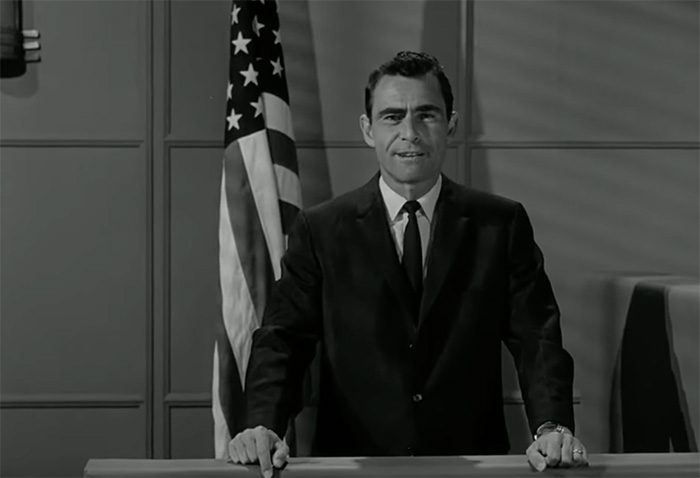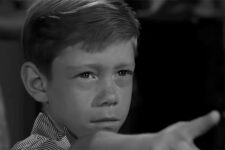
“Rod Serling’s ‘The Twilight Zone’ has always been synonymous with boundary-pushing narratives, captivating audiences with its blend of science fiction and horror elements. Yet, within its impressive lineup of episodes, there lies a hidden chapter that remained out of public view for half a century. This is the story of ‘The Encounter,’ an episode that ventured into the sensitive aftermath of World War II and inadvertently sparked controversy, leading to its long-term ban from the airwaves.
First airing in May 1964, “The Encounter” was a bold foray into the aftermath of World War II, exploring the deep-seated prejudices and psychological scars left by the conflict.

The episode featured two characters – a World War II American veteran, Fenton, and a young Japanese-American man, Arthur Takamori, played by George Takei, best known for his role as Sulu in Star Trek
. The plot unfolds in Fenton’s attic, where a Japanese katana, a relic of the war, becomes the focal point of escalating tension between the two men. The episode culminates in a violent clash, driven by the sword’s ominous legacy and the characters’ mutual animosity.
What led to “The Encounter” being pulled from the airwaves and locked away for so long? The answer lies in its controversial portrayal of race and history.
The episode insinuated that Takamori’s father was a traitor who signaled Japanese planes during the Pearl Harbor attack – a fictional narrative that perpetuated damaging stereotypes about Japanese Americans.
This portrayal was particularly egregious, given the historical context of Japanese American internment during the war. It was a narrative misstep that, while seeking to address themes of bias and trauma, ended up alienating audiences and igniting outcry, particularly from the Japanese-American community.

In a show celebrated for its progressive approach and willingness to tackle complex issues, “The Encounter” stood out as a stark misjudgment. The lack of diversity in the writers’ room – a common issue of the era – likely contributed to this oversight.
Despite the good intentions of its creators, the episode’s content was deemed too problematic, leading to its removal from television and subsequent exclusion from syndication and home video releases for over 50 years.
The ban on “The Encounter” was lifted on January 3, 2016, when Syfy aired the episode as part of its New Year’s Day “Twilight Zone” marathon.
This reintroduction to the public was a significant moment, allowing contemporary audiences to view and assess the episode within a modern framework. Now available on Paramount+, “The Encounter” serves as a historical artifact – a window into the societal attitudes and television practices of the 1960s.
Reflecting on “The Encounter,” it becomes evident that “The Twilight Zone” was as much a product of its time as it was ahead of it.
Rod Serling’s vision, while pioneering, was not immune to the era’s limitations. Today, the episode offers valuable lessons in the evolution of storytelling, the importance of diverse perspectives in media, and the power of television as a mirror to society’s triumphs and failings.





